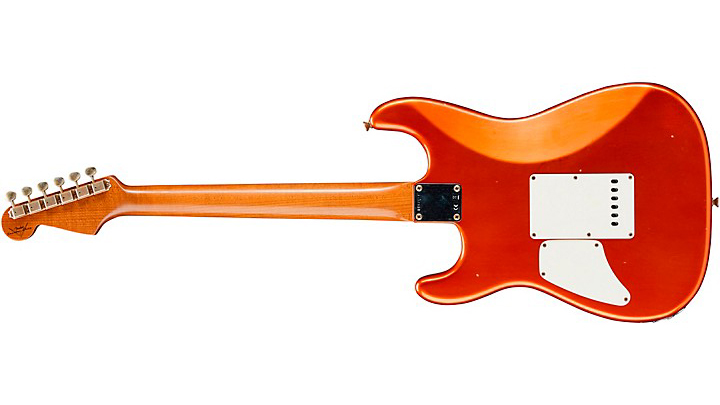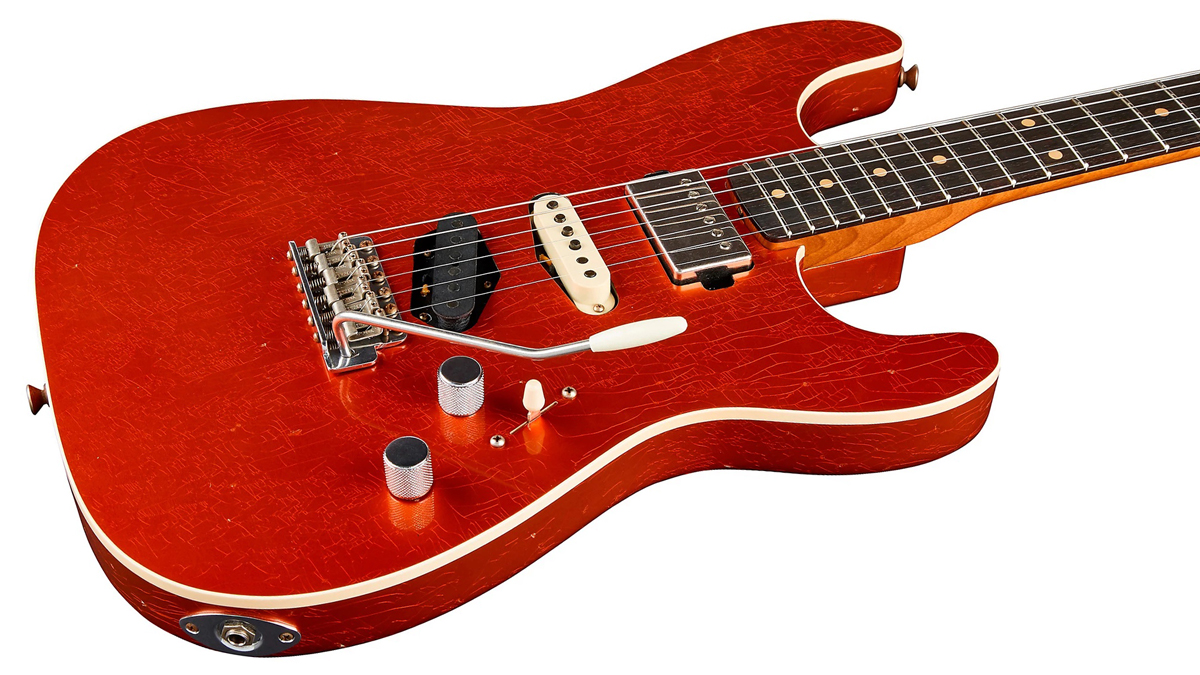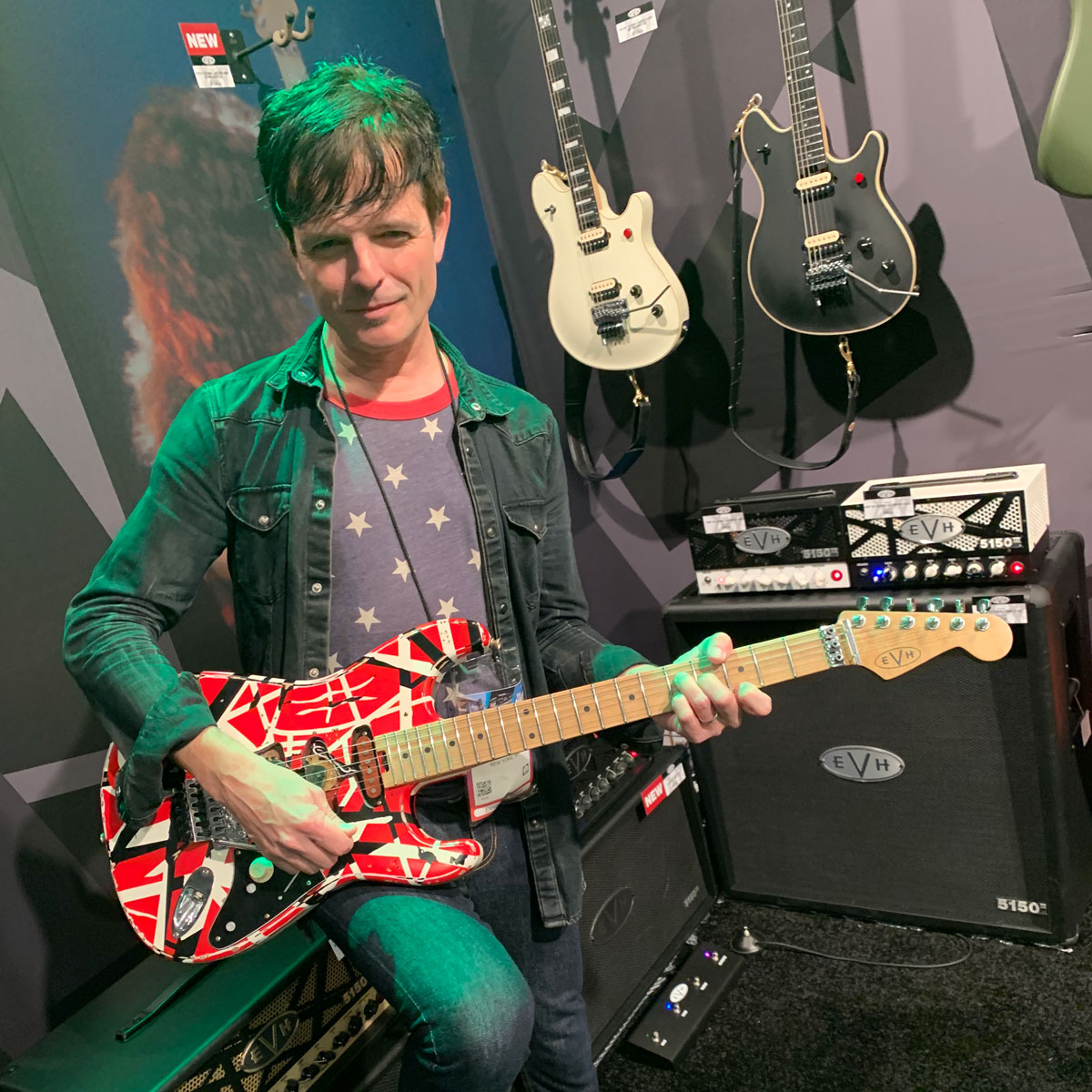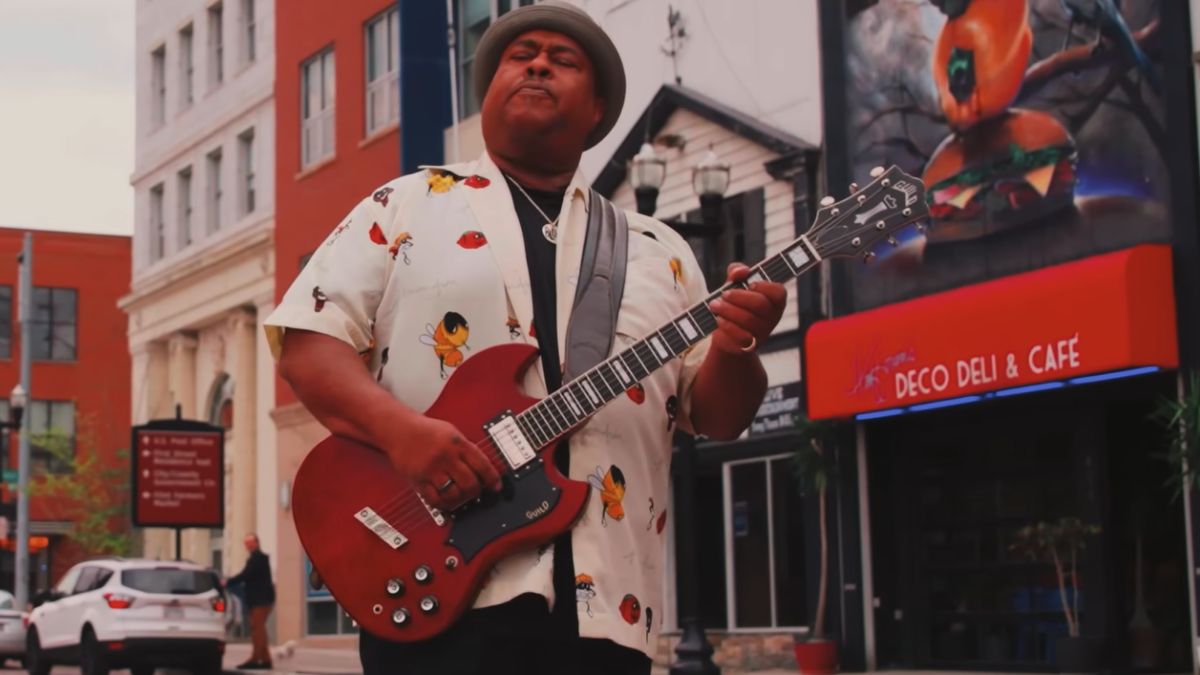Guitar World Verdict
This is a collectable guitar worth owning and playing for the rest of your life, and though you’ll need to stretch for it, it’s more affordable than many top-shelf instruments.
Pros
- +
Top-shelf build and finish.
- +
Wide range of tones from vintage to modern.
- +
A collector's item.
Cons
- -
Only available through Guitar Center which might make it tricky to source for some.
- -
It's pricey.
You can trust Guitar World
The comments section of social media posts for brand-new guitars is like catnip for guitarists. Just scroll through the polarizing opinions from the clowder of the “cooler than thou” as they incessantly debate said guitar’s worthiness or dissect its looks with a pithy “beauty is in the eye of the beholder” – only to beat that aesthetic down to within an inch of its proverbial life.
But since there’s no place for that diatribe here, allow me to put in my two cents toward a newly released one – the Guitar Center Exclusive Fender Custom Shop Dealer Select Stratocaster HST Journeyman. Sure, that’s quite a mouthful, but wait – Guitar Center?
Yes. Whether you knew it or not, the music retailer has been collaborating with blue-chip guitar manufacturers like the Fender Custom Shop to design premium spec’d guitars that are exclusive only to them.
What’s interesting about this one is that its “HST” acronym denotes the guitar’s humbucker/single/Tele pickups. However, from bridge to neck, these pickups are actually in the reverse order. Now, while this Stratocaster’s unusual pickup configuration is nothing new (e.g. Robin Guitars Ranger), it will raise some eyebrows over its hybrid design and relic’d look that comes in five striking “aged” metallic colors.

Whether that induces aversion or adoration from the masses is inconsequential, because everything about this Custom Shop Stratocaster designed by GC – from its wealth of tones to its playability – is spectacular.
Since it’s a “Guitar Center Exclusive,” it means this guitar can’t be reproduced by any other dealer. But besides that, it’s still a Fender Custom Shop Stratocaster, which means its attention to detail, components and construction are off the charts.
For example, the HST has that resonant “knock” that emanates from its body to its pickups, which in turn brings an undeniably loud and vibrant sound that reveals its premium build.
All the latest guitar news, interviews, lessons, reviews, deals and more, direct to your inbox!

Speaking of which, the trinity of pickups (FCS “Fat ’51 Nocaster” single-coil bridge, FCS “Fat ’50s” reverse wound single-coil middle, and Seymour Duncan SH-55 Seth Lover humbucker neck) were selected for their balanced output throughout each of the five pickup selections, but as important, each pickup delivers its own distinct, wide-open tone with a buttery, vintage-like response.
The roasted maple neck is quarter-sawn, with a compound radius (7.25”- 9.50”) fretboard that encourages dextrous speed, precise intonation and solid comfort – no matter where you play on its fast-feeling neck. I’d like to say the HST is a “marriage of convenience,” where modern features meet vintage appointments, and then gracefully merged between a Strat and a Tele Custom (courtesy of its aged white body binding).

I’ll grant this guitar is not for everyone, but as a stripped-down beast that’s tailor-made for savvy players who crave versatility and quality, it’s a serious contender.
No doubt, this is a collectable guitar worth owning and playing for the rest of your life, and though you’ll need to stretch for it, it’s more affordable than most top-shelf instruments – and that’s nothing to get catty about.
Specs
- STREET PRICE: $4,360 (inc. hardshell case)
- TYPE: Solidbody electric guitar
- BODY: Alder
- NECK: Roasted maple, bolt-on, ’60s-style Oval C profile
- FINGERBOARD:, AAA rosewood fretboard, 7.25-9.5" compound radius
- FRETS: 21
- SCALE: 25.5"
- ELECTRICS: Seymour Duncan SH-55 humbucker (neck), Fat ’50s Strat (middle), Fat ’51 Nocaster (bridge), 5-way switch
- HARDWARE: American Vintage tremolo bridge/tailpiece, vintage locking tuners
- FINISH: Aged Candy Tangerine (as reviewed), Aged Aztec Gold, Aged Sherwood Green Metallic, Aged Lake Placid Blue, Aged Candy Apple Red
- CONTACT: Guitar Center
Paul Riario has been the tech/gear editor and online video presence for Guitar World for over 25 years. Paul is one of the few gear editors who has actually played and owned nearly all the original gear that most guitarists wax poetically about, and has survived this long by knowing every useless musical tidbit of classic rock, new wave, hair metal, grunge, and alternative genres. When Paul is not riding his road bike at any given moment, he remains a working musician, playing in two bands called SuperTrans Am and Radio Nashville.


